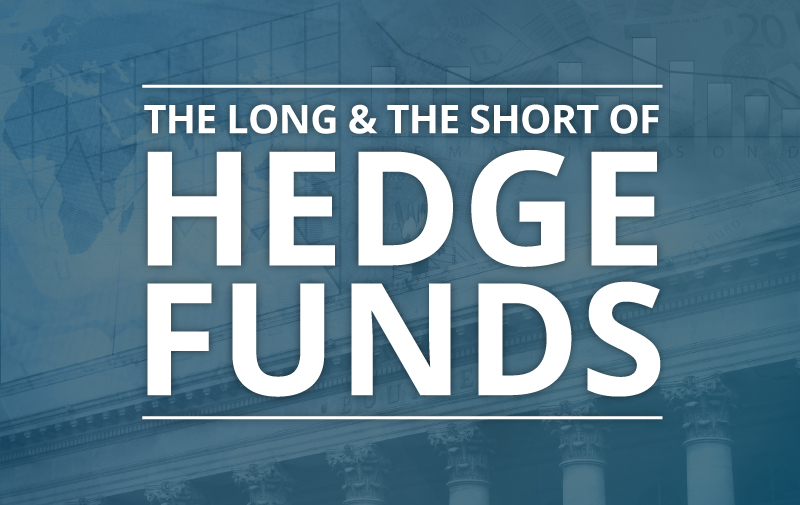Introduction to Hedge Funds
Hedge Funds often have a bad reputation of being short sellers and/or frequent traders, due to short-term outlooks. While this may be true for some funds, it is important to understand there are many different investing strategies for hedge funds, including those that take large positions to hold for an extended period of time.
Types of Funds
There are almost countless types of hedge funds, as investors chase different strategies in an attempt to outperform the broader market or invest in specific aspects of the market. Some of the most well-known strategy types are Long-Short, Market-Neutral, Event-Driven and Macro Funds.
Long-short funds are perhaps the best known type of fund. They greatly increased in popularity during the 1990’s bull market. Many of these funds were created by mutual fund portfolio managers and analysts after they had built up an investing track record and were able to attract capital. In addition to potentially providing managers with greater economic upside, these funds could also provide more flexibility in investing opportunities than would have been allowed under a mutual fund’s prospectus.
Long-Short Funds
Perhaps most relevant to management teams are long-short funds where the portfolio managers and analysts are investing based on bottom-up fundamental analysis. Like any mutual fund, these funds may have a variety of strategies, including:
- Investing as generalists across a wide variety of companies, or focused on specific sectors and industries
- Long-term investing, driven by fundamentals or short-term trading, often driven by technical indicators
- Market cap specific, whether small-cap, mid-cap or large-cap
- Growth vs. value
Within any of the above strategies, these funds, unlike most mutual funds, can also take short positions. Like taking a long position, short positions can be the result of the same fundamental analysis process. We will look at short positions in another blog, but for now will say it is important to not spend too much time worrying about shorts, and instead stay focused on business fundamentals and growth.
Long-Only Funds
Some hedge funds will invest on a long-only basis. In this respect, they may be similar to a mutual fund but with different regulatory and filing requirements, different fee structures and different stakeholders.
One of the advantages of a long-only hedge fund versus a long-only mutual fund is that hedge funds are typically not benchmarked to a market index, thus allowing them to find specific investments where they feel the greatest returns (alpha) will be generated.
Small, Non-Filing Funds
Funds which have under $100 million in assets under management are not required to file SEC Form 13F on a quarterly basis reporting their long positions (in addition to put and call options, ADRs and convertible notes). For small-cap companies, these funds can make up a core group of shareholders or potential shareholders.
As an example, for a fund with only $50 million in assets, a $1 to $5 million position would represent a significant investment, and one that could have a meaningful impact on performance. However, for a larger fund, it may not be worth the time and effort to look at a position this size, since even if the stock greatly outperformed the market, the small investment versus overall assets would not meaningfully impact performance.
Conclusion
Gilmartin Group has extensive experience with hedge funds that are healthcare investors. From a company perspective, it is always important to know a fund’s history, investing strategy and people. Gilmartin Group can help with this, so you not only understand who your current shareholders are, but who the potential shareholders are as well. For more information and help in identifying your best shareholder partners, contact us.
Tom Brennan, CFO


Leave a Reply